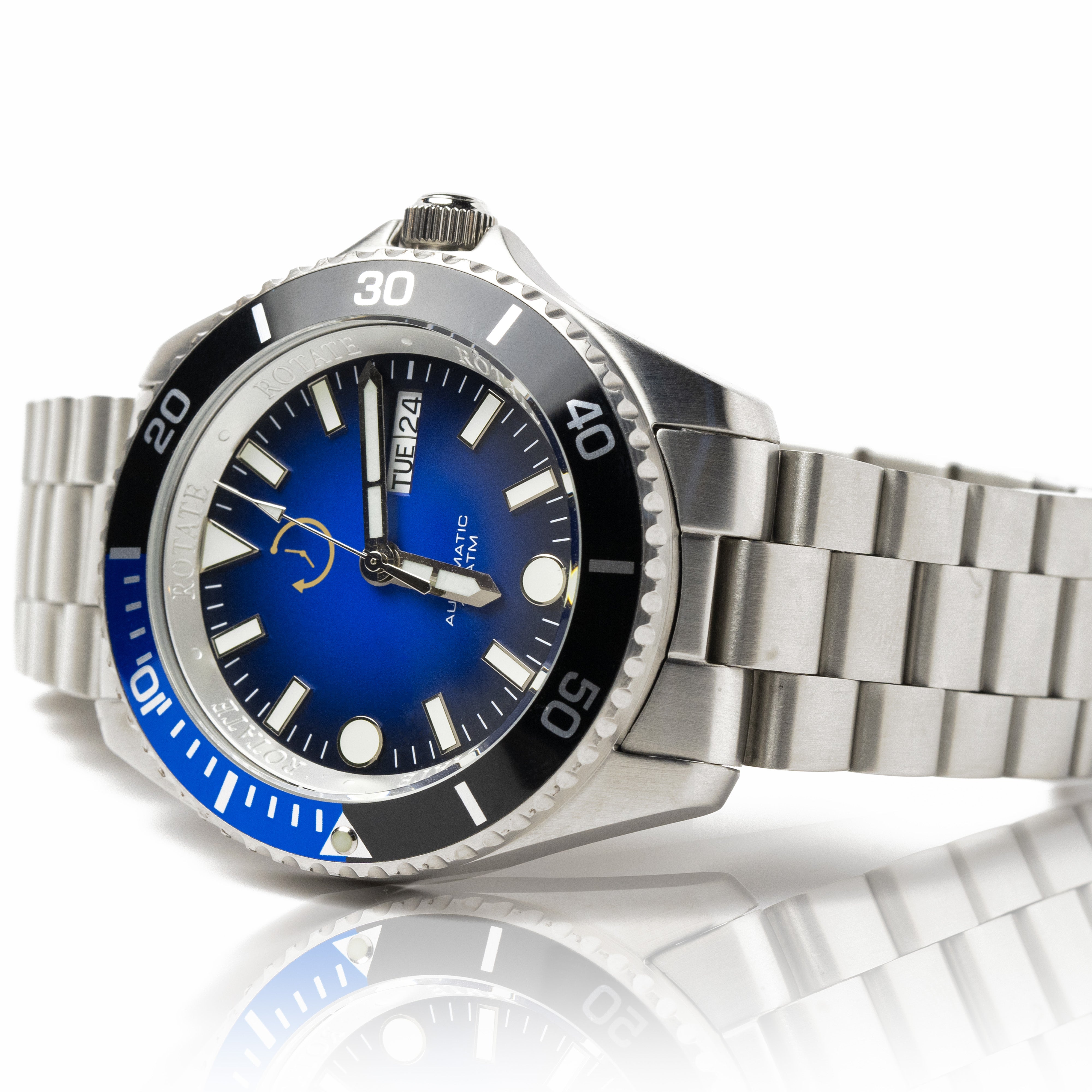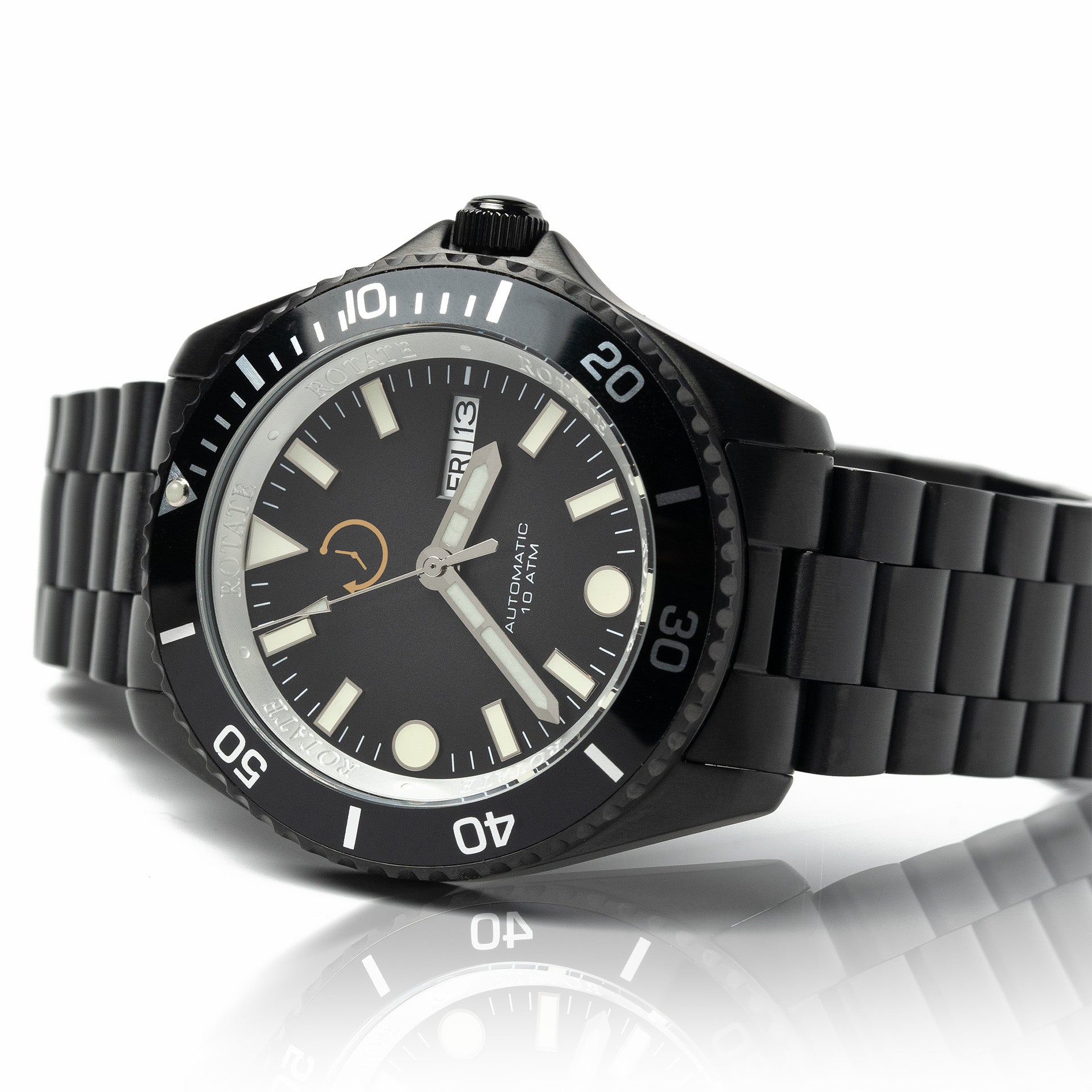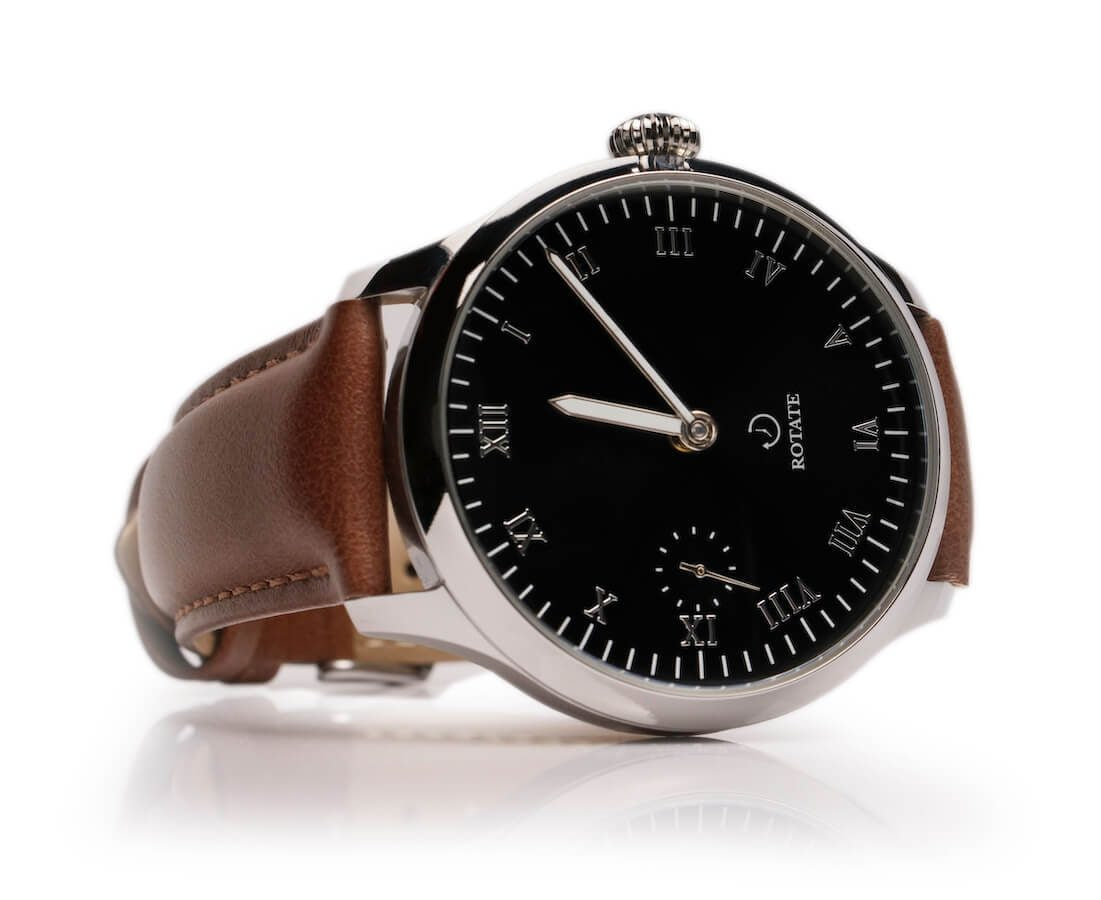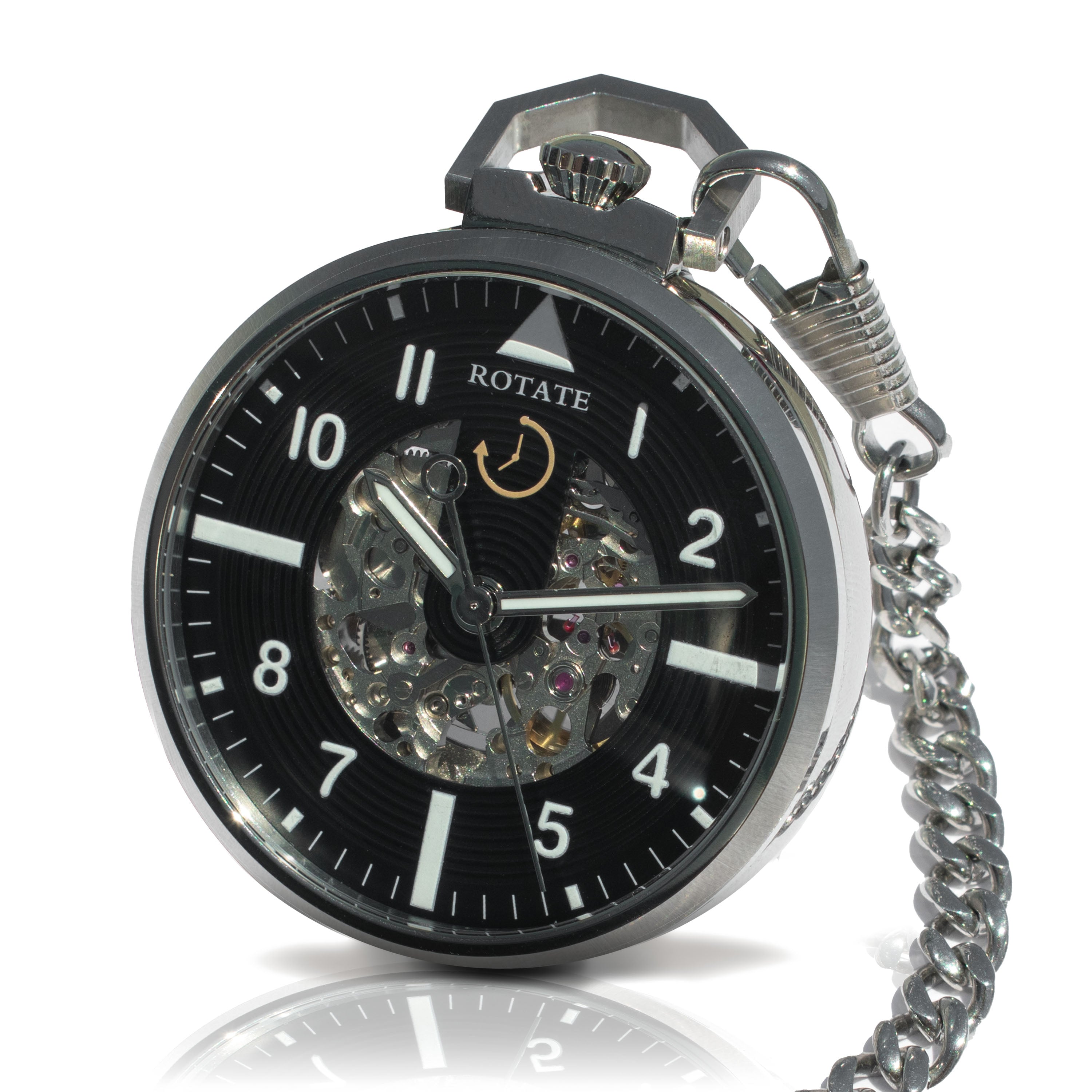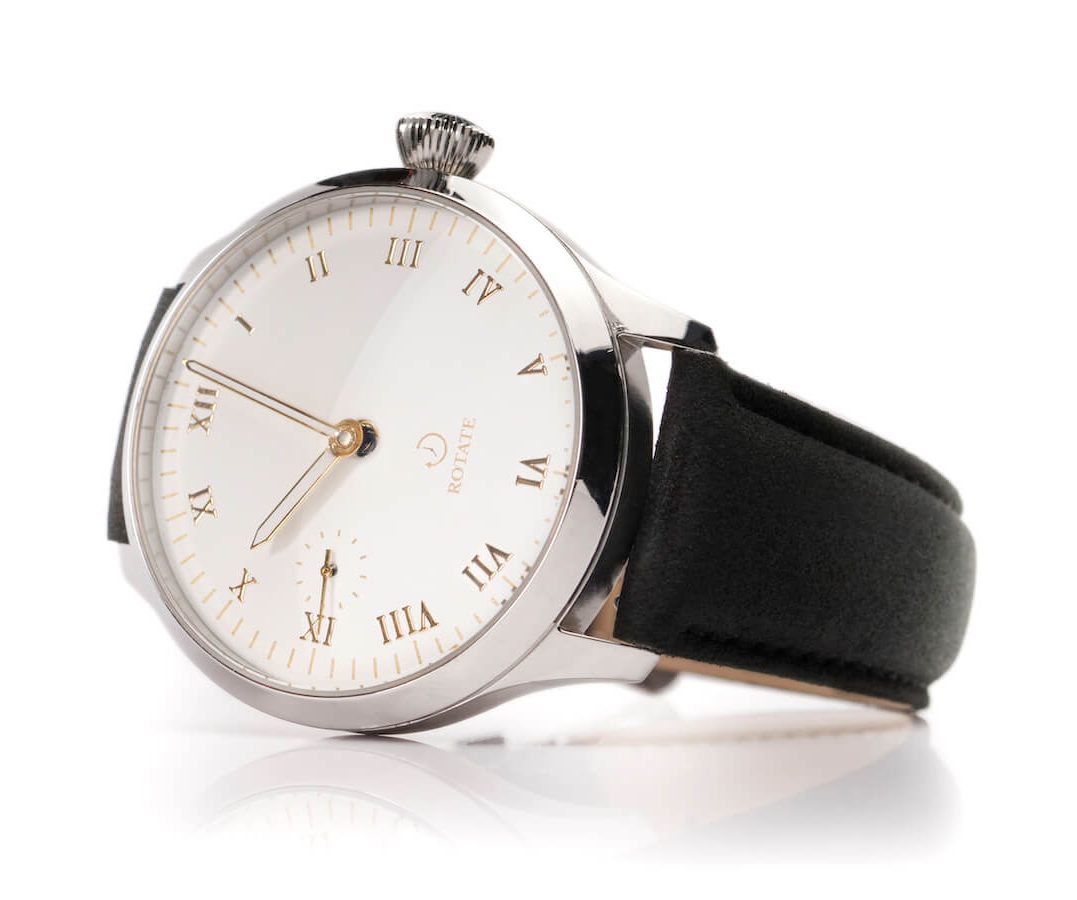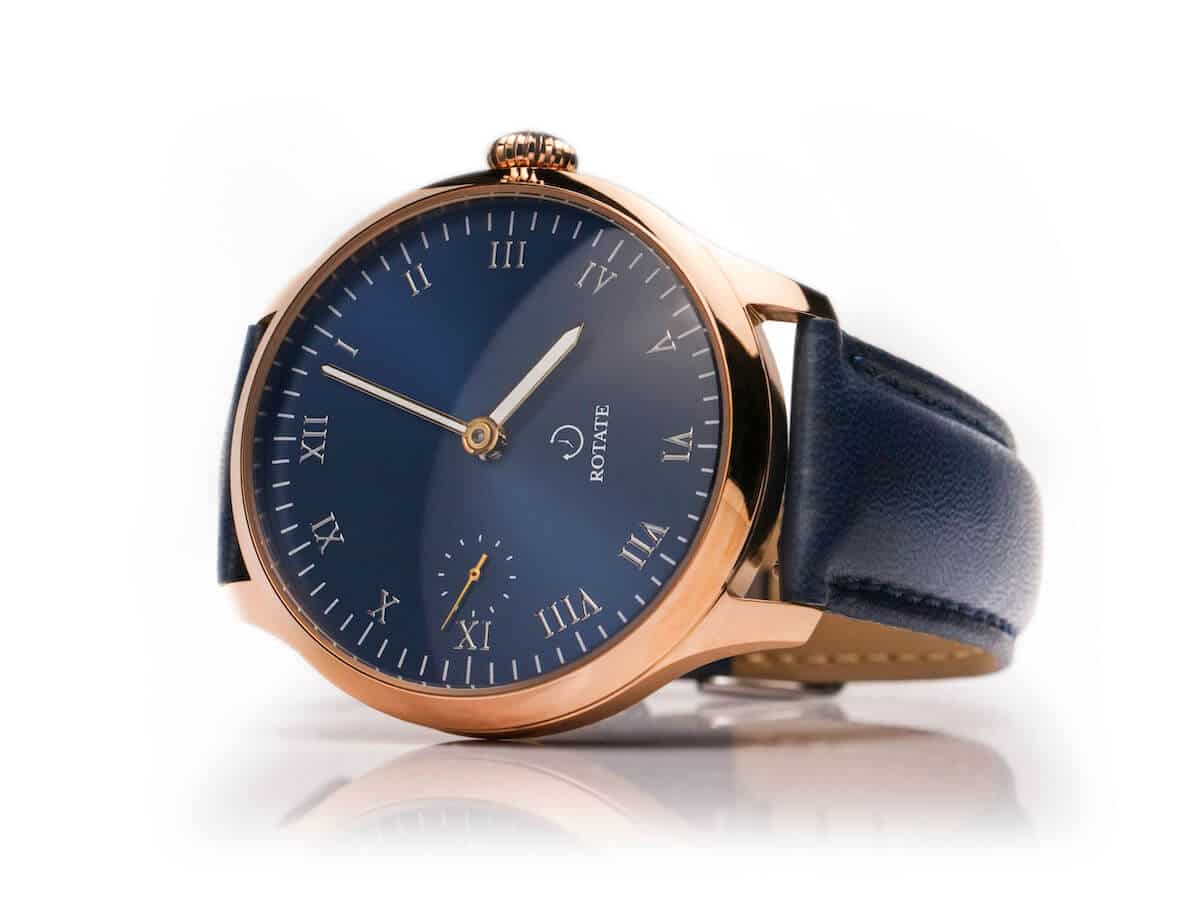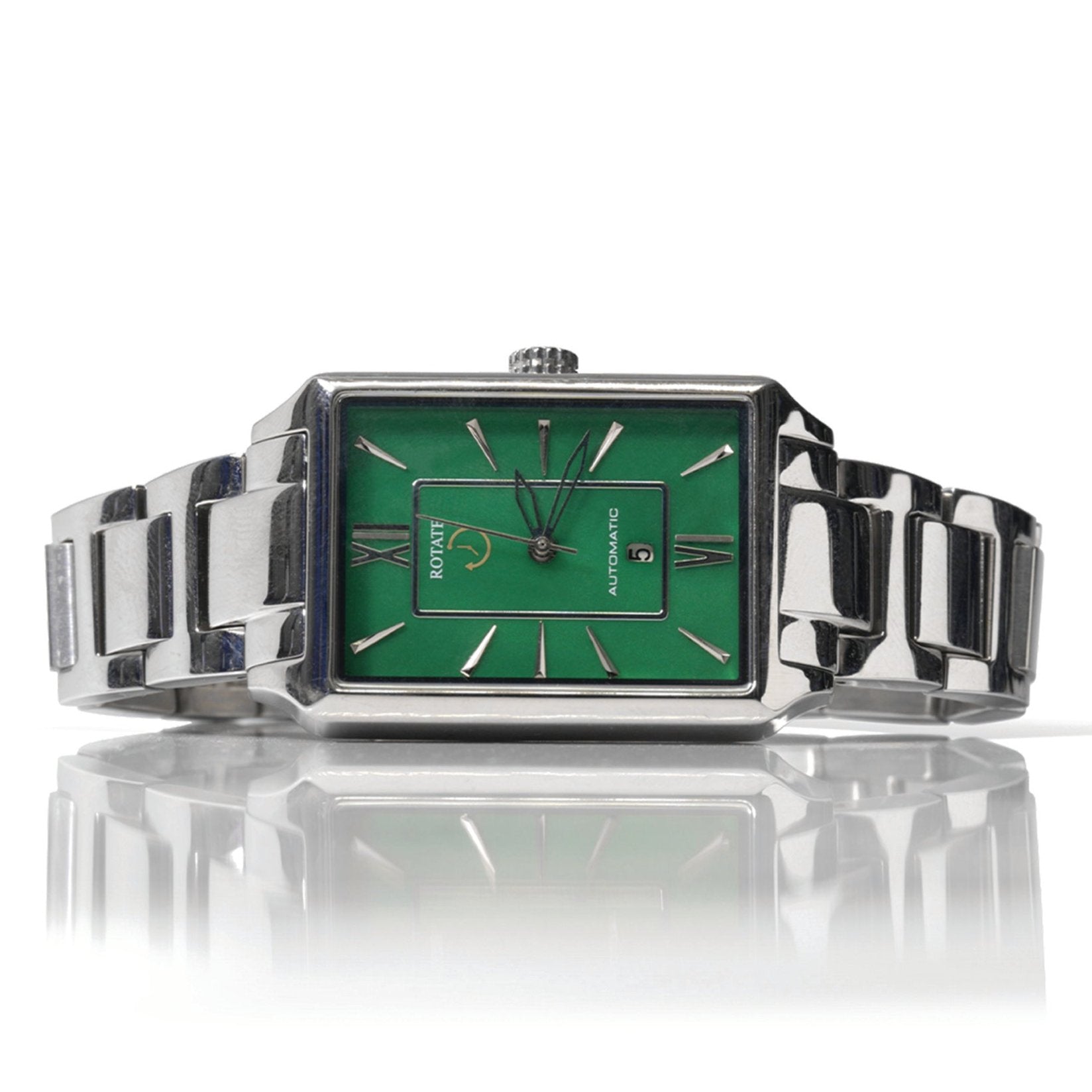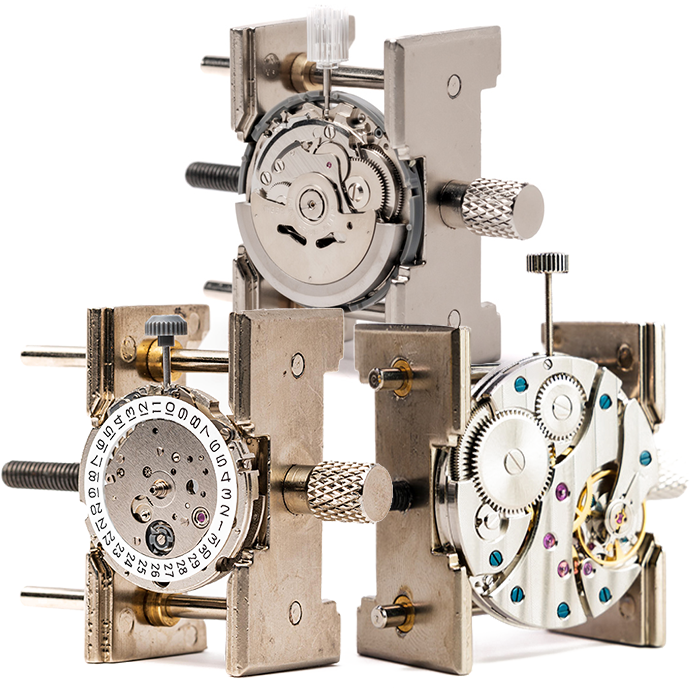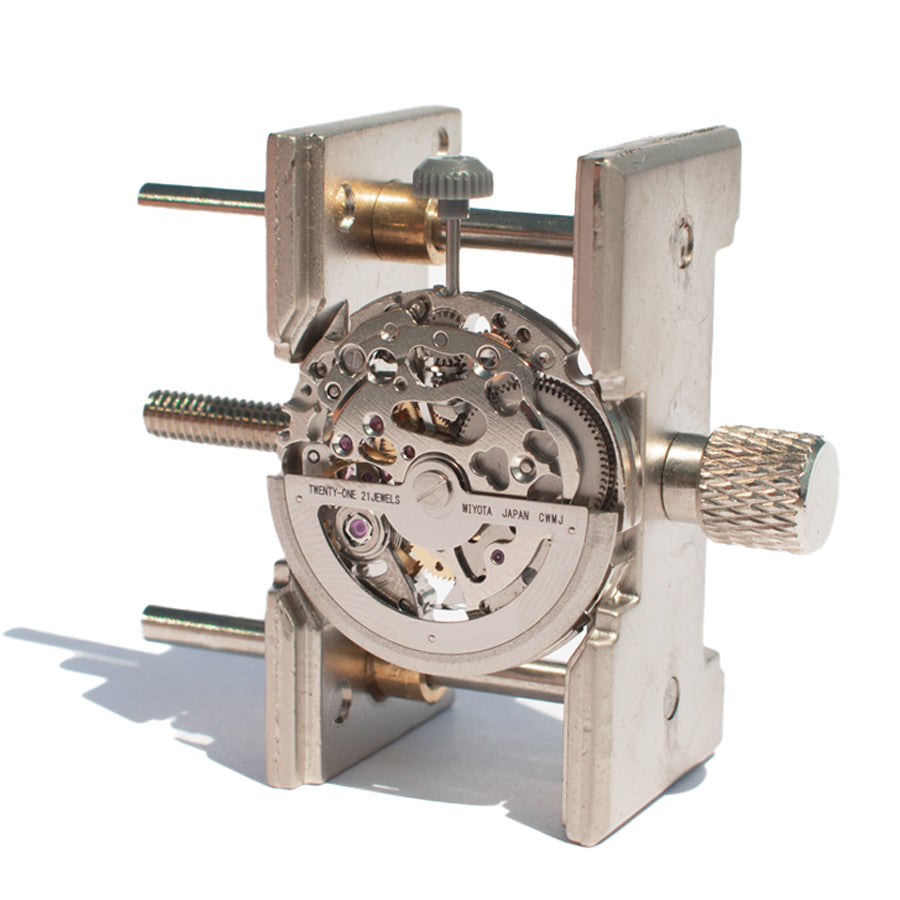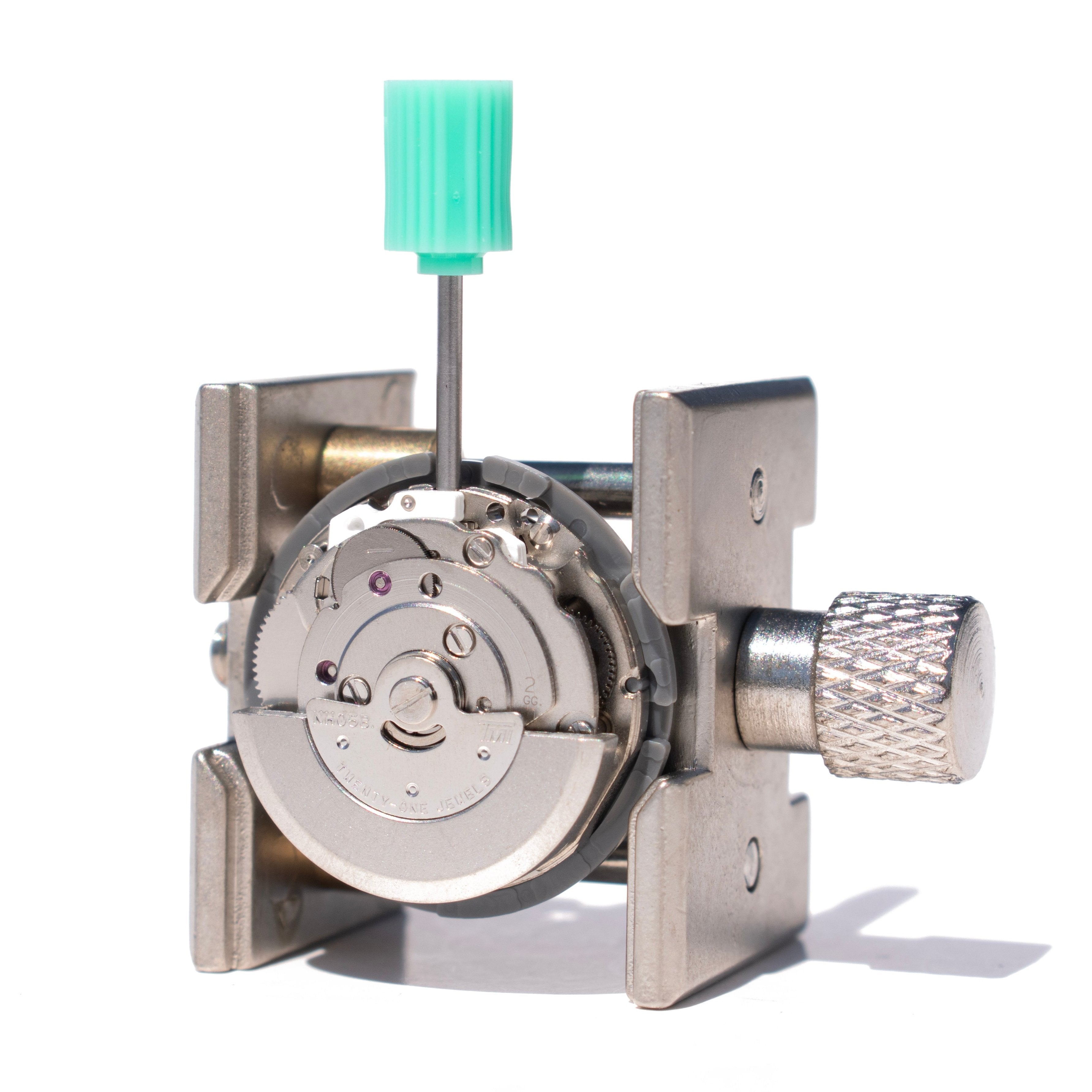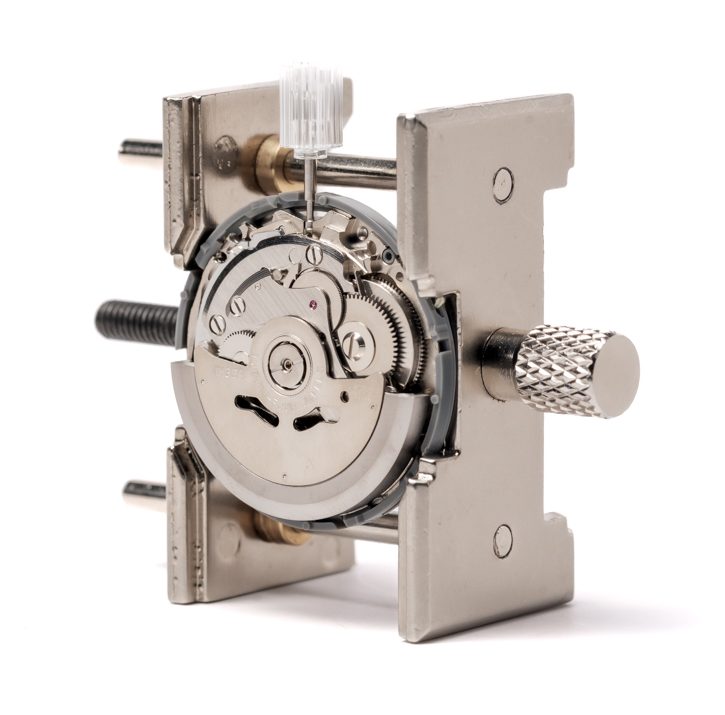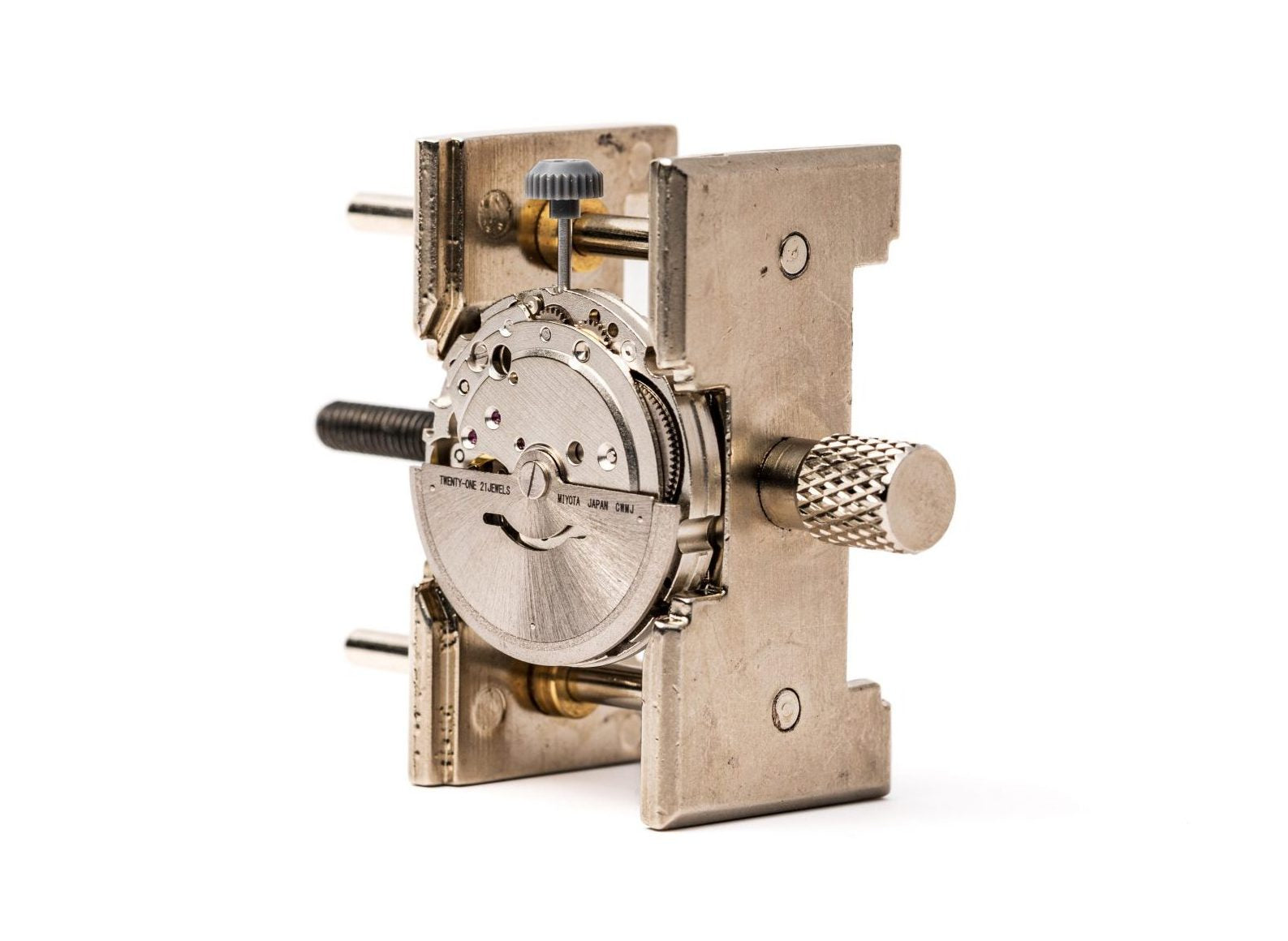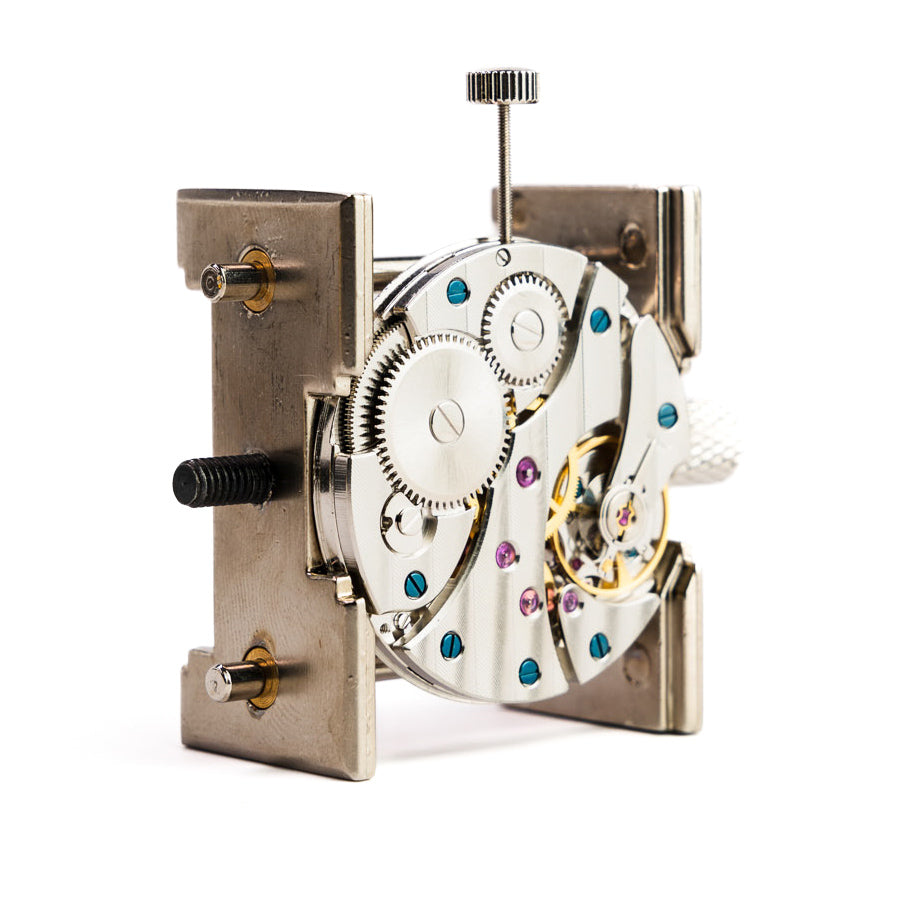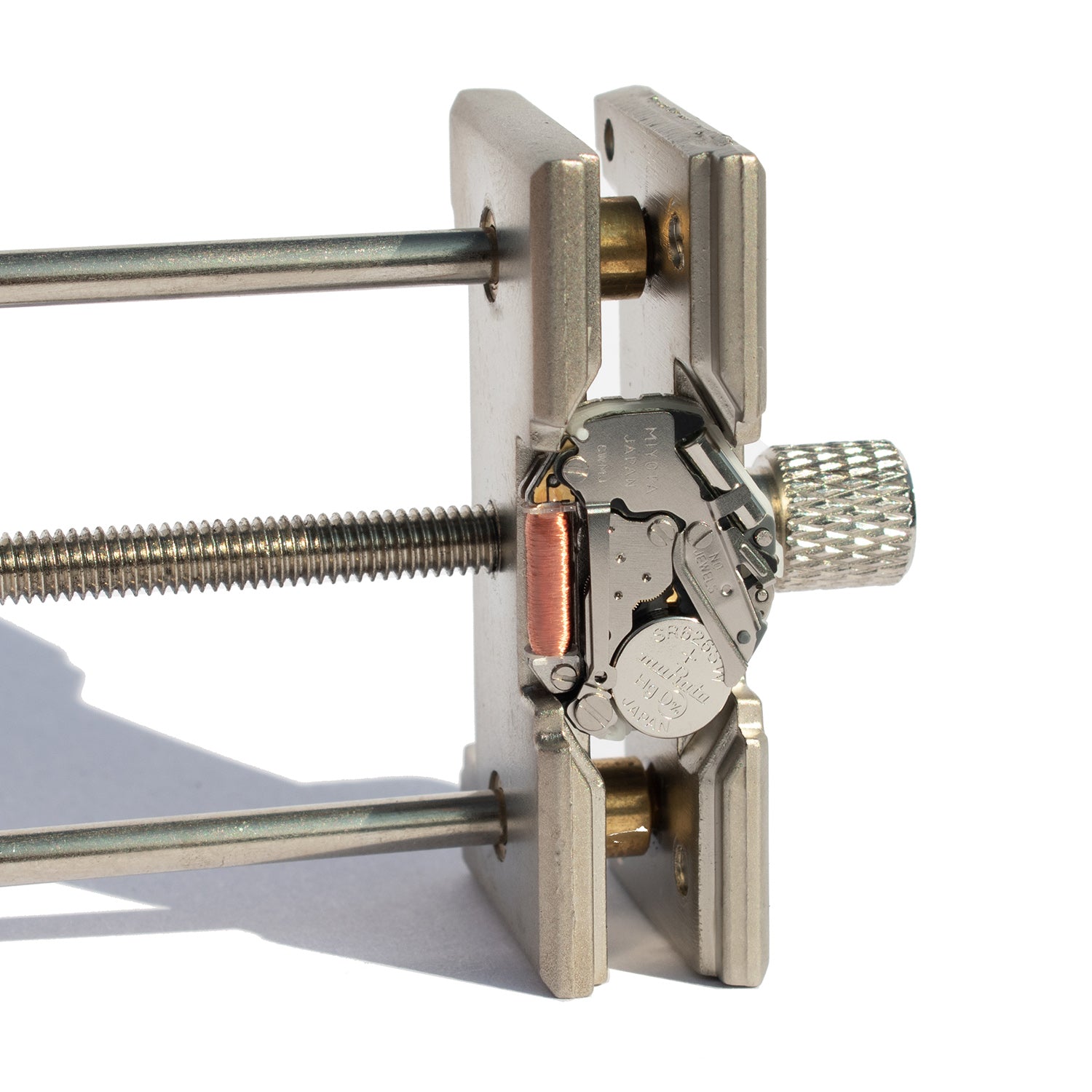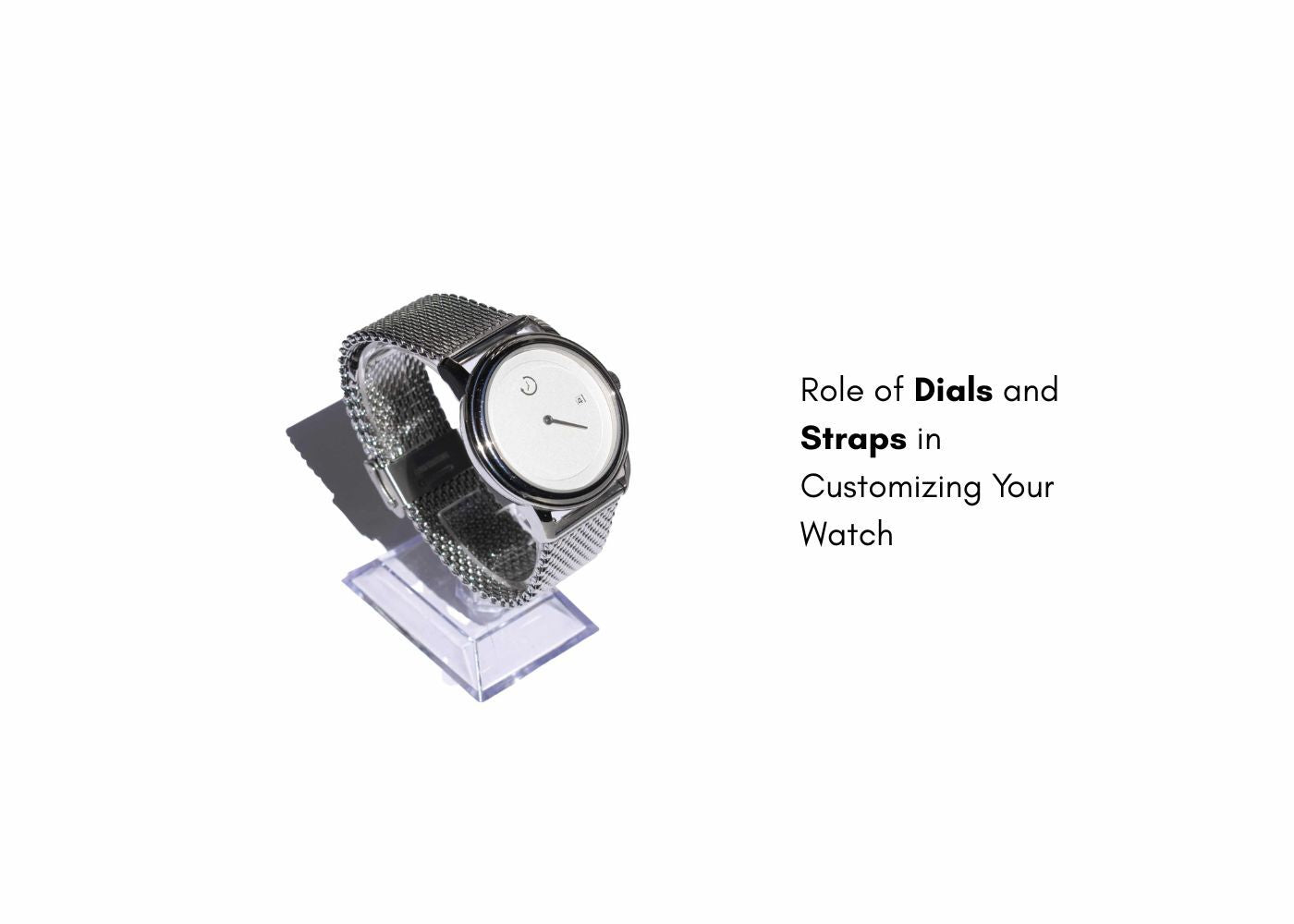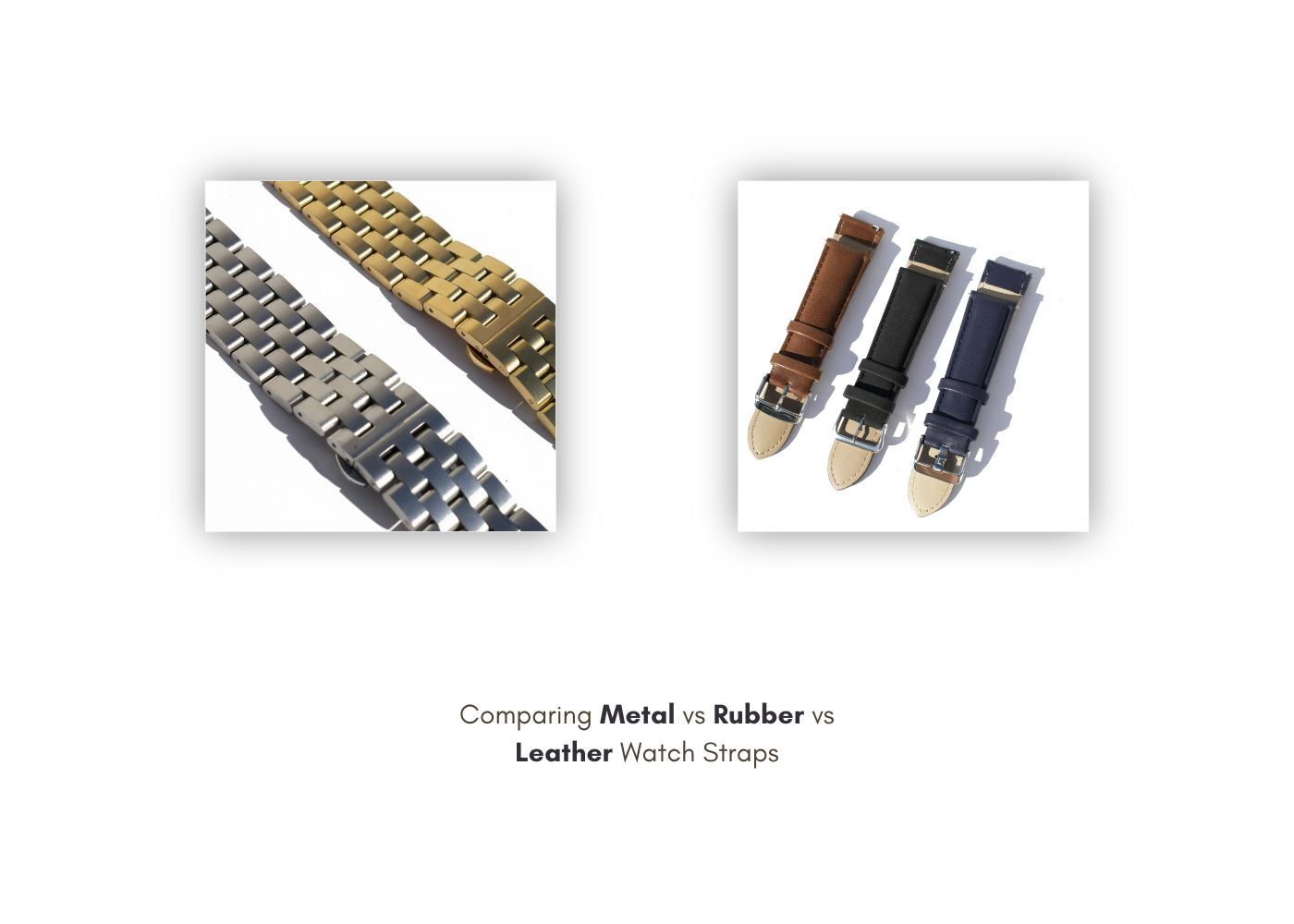
Comparing Metal vs Rubber vs Leather Watch Straps
Your choice of strap material can dramatically transform a timepiece's appearance, comfort level, and longevity. Let's take a look at the Metal, Rubber and Leather straps in more detail to help you decide what's the most suitable choice for you.
Metal Straps (Unmatched Durability and Presence)
Metal watch straps offer exceptional longevity compared to other strap materials. A quality stainless steel bracelet might serve faithfully for decades while maintaining its appearance with minimal maintenance. Many watch enthusiasts appreciate how Mesh Chain Link Stainless Steel Watch Straps from Rotate Watches provide that perfect balance of sophisticated aesthetics and practical durability.
Water resistance plays a crucial role in determining strap longevity. While leather absorbs moisture and eventually deteriorates, stainless steel simply needs occasional cleaning to maintain its luster.
Swimming, unexpected rain showers, or washing hands becomes worry-free with metal bracelets.
Metal's versatility extends beyond mere practicality. A well-designed Chain Link Stainless Steel Watch Strap looks equally appropriate in formal boardroom settings and casual weekend outings. Many professionals appreciate how stainless steel naturally coordinates with other metal accessories like cufflinks, belt buckles, and rings.
Weight often signals quality in watchmaking circles. A substantial steel bracelet adds satisfying heft that transforms even modestly priced timepieces into something that feels genuinely premium. Watch collectors frequently note how steel bracelets improve the overall balance, helping larger watch cases sit more securely on the wrist rather than sliding around.
Leather Straps (Timeless Elegance and Evolving Comfort)
Leather straps offer unmatched character development over time. Unlike other materials, quality leather develops a beautiful patina that tells the unique story of your wearing habits. Many enthusiasts consider this personalization process part of the charm of options like Quick-Release Genuine Leather Watch Straps.
Comfort ranks among leather's most significant advantages. High-quality leather straps conform to your wrist shape over time, creating a custom-like fit that many wearers find more comfortable than rigid metal bracelets. Morning-to-evening wear becomes increasingly pleasant as the strap adjusts to your unique wrist contours.
Style versatility takes different forms with leather. While metal tends toward a modern, technical aesthetic, leather straps span the full spectrum from casual to formal. Options like Black Alligator Straps elevate dress watches to new heights of sophistication, while distressed leather creates a more casual, rugged appearance.
Temperature variations affect leather less than metal. During cold winter months, metal bracelets can feel uncomfortably chilly against the skin, while leather maintains a more neutral temperature. Similarly, in summer heat, leather doesn't retain heat to the same degree as metal.
Seasonal versatility makes leather a practical year-round option. Many watch enthusiasts maintain both metal and leather options, switching depending on weather conditions, attire, or specific occasions.
Rubber Straps (Performance-Oriented Protection)
Rubber straps excel in active environments where watches face extreme conditions. Water, sweat, dirt, and impact present minimal concerns with quality rubber, making these straps favored companions for outdoor adventures, workouts, and water sports.
Chemical resistance provides another significant advantage for rubber straps. Swimming pools, ocean water, and even occasional exposure to household chemicals won't damage quality rubber materials, while these same substances can quickly deteriorate leather or corrode lower-quality metals.
Lightweight comfort makes rubber ideal for extended wear during physical activities. Metal's additional weight, while appealing in some contexts, can become cumbersome during exercise. Rubber's minimal weight reduces fatigue during extended periods of movement.
Cleaning simplicity appeals to practical-minded individuals. Most rubber straps require only a quick rinse with soapy water to remove accumulated sweat and dirt, while leather demands careful maintenance and metal often requires more thorough cleaning to remove debris from between links.
Modern advancements have elevated rubber beyond purely utilitarian applications. Premium watch brands now offer sophisticated rubber options that deliver performance benefits without sacrificing style, using textured surfaces and refined finishes to create visual interest.
Matching Your Strap to Your Lifestyle
Daily activities should heavily influence your strap material choice. Office professionals who rarely encounter water or extreme conditions might prefer the refined appearance of leather or the versatile elegance of steel. Active individuals who frequently encounter water, sweat, or rough conditions typically find rubber most practical.
Maintenance willingness matters significantly. Leather requires regular conditioning to prevent cracking and maintain appearance. Metal occasionally needs cleaning between links to remove accumulated debris. Rubber demands the least maintenance, typically needing only occasional cleaning with soap and water.
Climate considerations often get overlooked. Humid environments can accelerate leather deterioration unless properly maintained. Extremely cold climates make metal bracelets uncomfortably chilly against the skin. Rubber performs consistently across most temperature ranges, though some lower-quality options may stiffen in extreme cold.
Watch enthusiasts working with the Cabot Watchmaking Kit or Seiko NH36 Movement Kit gain deeper appreciation for how strap materials complement different watch styles. The design characteristics of your timepiece, including case material, dial color, and overall aesthetic, should harmonize with your strap choice.
FAQ
Q. Is a leather or metal watch band better?
Neither is universally "better" - each offers distinct advantages. Leather provides superior comfort, develops character over time, and offers classic elegance. Metal delivers unmatched durability, water resistance, and low maintenance. Your lifestyle, aesthetic preferences, and specific wearing conditions should determine your choice.
Q. Are leather watch straps better than rubber?
Leather excels in formal settings and offers superior aesthetics with developing patina over time. Rubber delivers better performance in wet conditions, during physical activities, and requires less maintenance. For dress watches and office environments, leather typically works better; for sports, water activities, and harsh conditions, rubber proves more practical.
Q. Which band material is best for watches?
No single material works best for all situations. Stainless steel offers excellent durability and versatility. Leather provides classic elegance and comfort. Rubber delivers superior performance in active settings. Many enthusiasts own multiple strap types, switching based on activities, seasons, and occasions.
Q. What is the best material for a watch band for working out?
Rubber and silicone straps dominate workout settings due to their sweat resistance, easy cleaning, and comfort during movement. Quality rubber won't deteriorate from exposure to moisture, won't absorb odors like leather, and proves more comfortable during activity than metal. For serious athletes, specialized rubber compounds with enhanced ventilation offer additional comfort during extended sessions.
Q. How do I clean different types of watch straps?
Metal straps need occasional cleaning with mild soap, water, and a soft brush to remove debris between links. Leather requires gentle wiping with a barely damp cloth and periodic conditioning with leather-specific products. Rubber straps can be cleaned with regular soap and water, making them the lowest maintenance option of the three main materials.


